Last week we started looking at a few different historic brick walls with severe deterioration at the motor joints. We talked about some of the main causes of the breakdown of materials in the mortar, over time without proper care and upkeep. Today we are going to look at the next stage of deterioration that takes place after more joints begin to break down and we are going to talk about calcium leaching and efflorescence, biocolonization, and how these types of second stage deterioration can lead to extreme damage of masonry structures.
Efflorescence and Calcium Deposits
Efflorescence refers to the crystalline deposits that appear on the surface of historic brick masonry. It is composed of water-soluble salts like sodium sulfate, calcium sulfate, potassium sulfate, sodium chloride, and calcium nitrate. These salts originate from the masonry materials themselves or from external sources like groundwater or deicing salts. Generally though when you see a fluorescence on the surface of a wall it’s not coming from de-icing type salts or things like that used on roadways, it’s coming from moisture that enters into the wall and dissolves the salts that are originally part of the mortar. Although the dissolution of the salt in the mortar itself is not an actual problem, it’s always a sign that other types of deterioration are happening and they are a problem. In this type of scenario, efflorescence forms when moisture penetrates the porous bricks and mortar, dissolving the soluble salts. As the water migrates to the surface and evaporates, it leaves behind the dissolved salts which crystallize into the visible deposits.
The emergence of efflorescence indicates an underlying moisture issue allowing water intrusion into the masonry system. This moisture penetration and salt crystallization can cause serious damage over time. The growth of salt crystals and simultaneous breakdown of the original matrix of binder and aggreagate within the porous masonry materials exerts internal pressures that lead to spalling, cracking, and delamination of the brick or mortar surfaces.
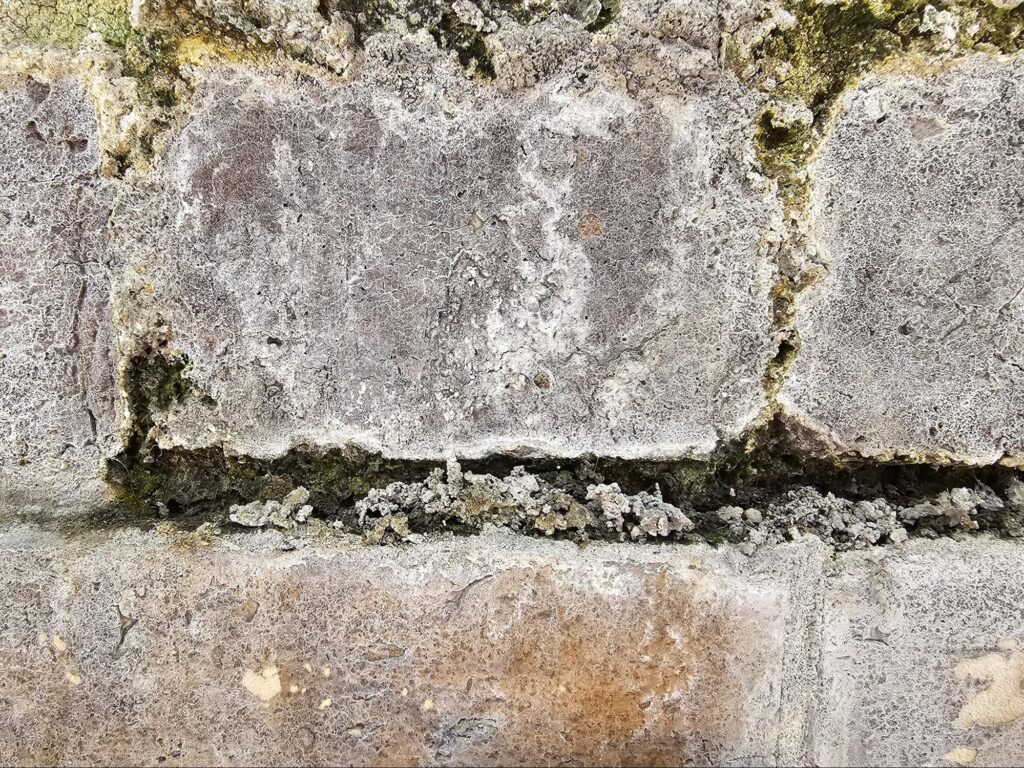
Efflorescence is often accompanied by continued moisture ingress, which enables further material deterioration and (more visual) salt migration while also contributing to freeze-thaw damage, corrosion of embedded metals like anchors or reinforcements, and even biological growth like mold or efflorescent vegetation. Severe and persistent efflorescence points to excess moisture continuously entering the masonry facade, potentially compromising the structural integrity to the point of bulging, displacement or collapse of the affected areas if left unaddressed.
Preventing efflorescence relies on controlling sources of moisture intrusion through proper water management, vapor barriers, drainage systems, repointing and tuckpointing and other techniques that limit water entry. The visible efflorescence itself serves as an important warning sign of deterioration requiring investigation and remediation of the root moisture issues to preserve the historic brick masonry before irreversible damage occurs.
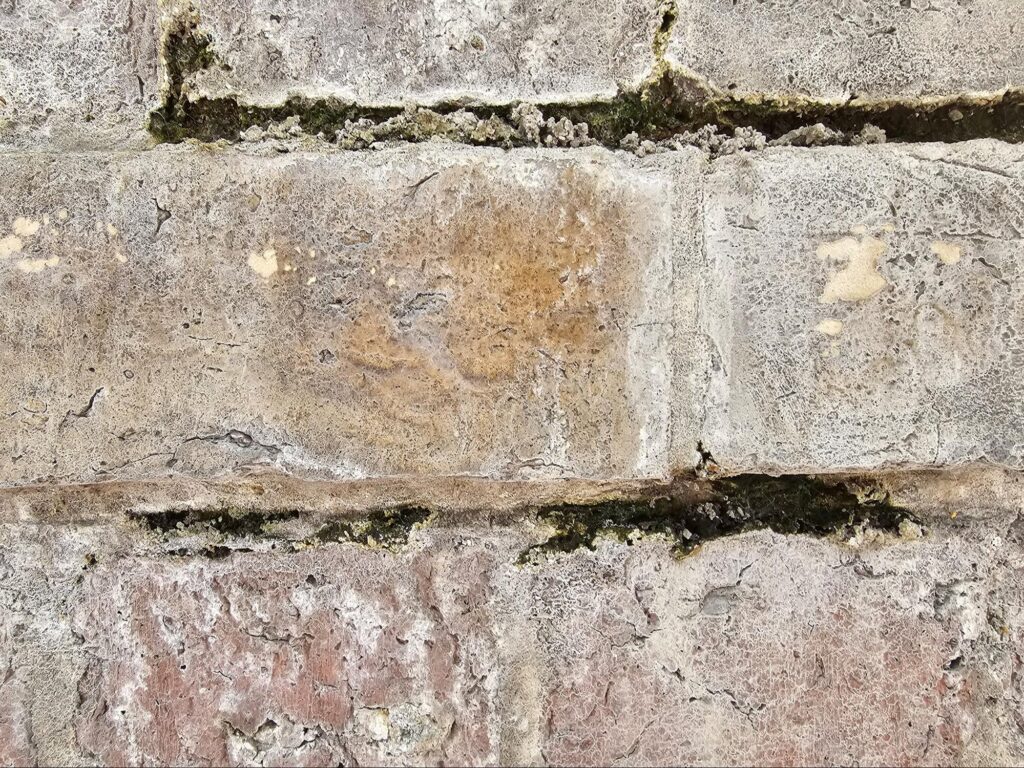
As the deterioration progresses, the recesses within the mortar joints can become more pronounced, exposing the edges of the surrounding bricks or stones. In severe cases, the mortar can become so deteriorated that it loses its cohesive strength and begins to crack and crumble.
At this advanced stage of deterioration, the mortar may become soft and friable, even to the touch. When gently probed with a hand or tool, the outer edge of the mortar joint at the face of the brick may crumble or disintegrate, indicating an advanced state of decay.
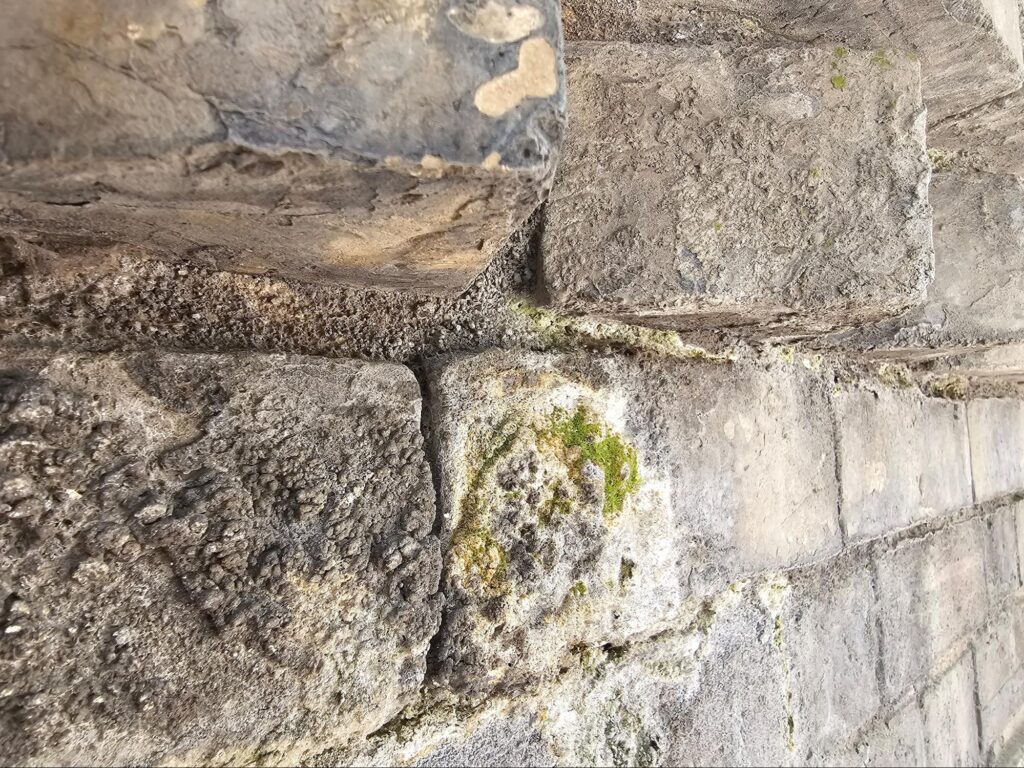
This softening and crumbling of the mortar is a clear sign that the structural integrity of the masonry has been compromised, and immediate intervention through repointing or tuckpointing may be necessary. Failure to address such severe mortar deterioration can lead to further moisture infiltration, potential dislodgement of bricks or stones, and an increased risk of structural instability.
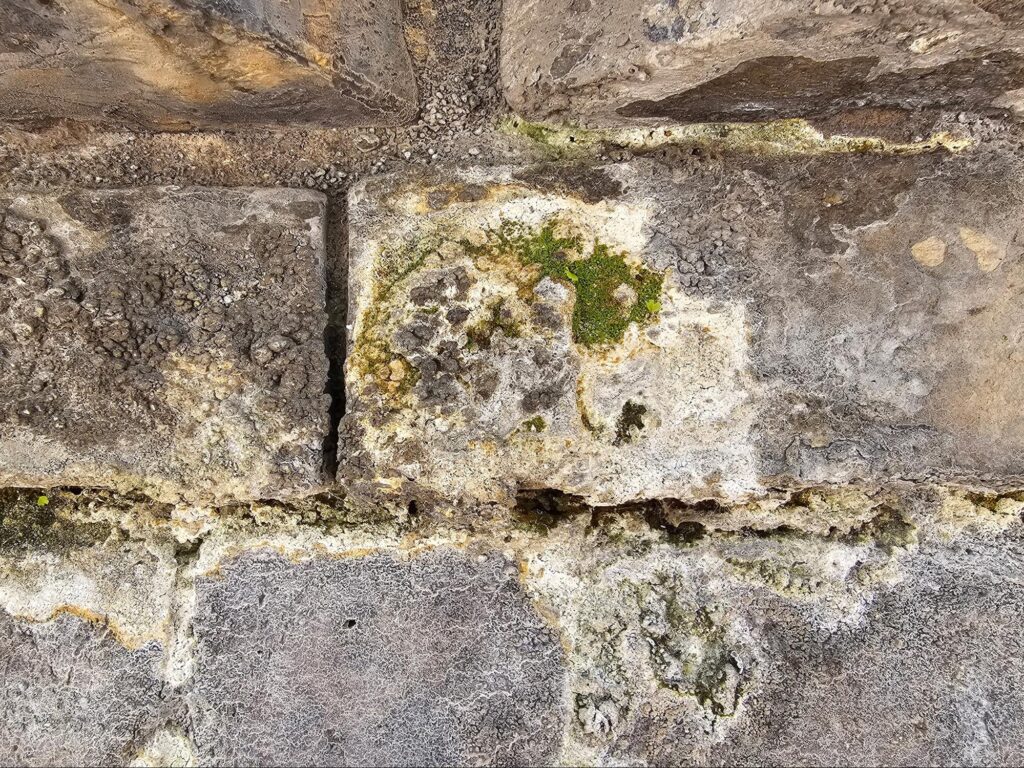
It is important to regularly inspect and maintain historic brick masonry to identify and address mortar deterioration in its early stages. By monitoring the formation of recesses and addressing any underlying causes of deterioration, such as moisture intrusion or environmental factors, building professionals can prolong the lifespan of these historic structures and preserve their architectural integrity.
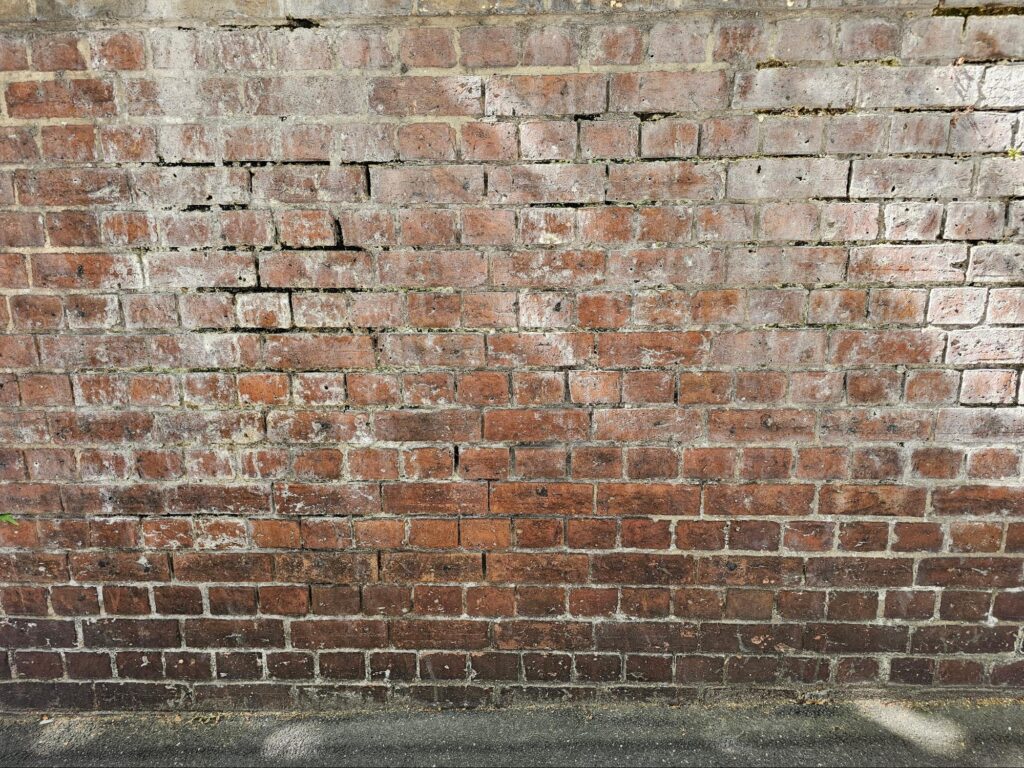 Biocolonization
Biocolonization
Bio-colonization, the growth of biological organisms such as plants, mosses, and lichens, within mortar joints and on the surface of historic brick masonry, can initiate and exacerbate the deterioration process. This natural phenomenon, while seemingly harmless at first, can have profound consequences if left unchecked, ultimately leading to the destabilization and potential failure of the masonry structure.
The process of bio-colonization typically begins with the establishment of pioneering species, such as microscopic algae, cyanobacteria, and fungi, which can thrive on the porous and alkaline surface of aged mortar. These early colonizers aid in the breakdown of the mortar’s surface, creating a more hospitable environment for larger, more complex organisms to take root.
One of the earliest macroscopic colonizers of mortar joints and brick surfaces is moss. These small, non-vascular plants possess specialized rhizoids (root-like structures) that can penetrate into the porous mortar, anchoring the plant and facilitating the absorption of water and minerals. While the presence of moss alone may not pose an immediate threat to the masonry, it serves as a precursor for the establishment of more aggressive plant species.
As the bio-colonization process progresses, various types of vascular plants may take hold, their seeds transported by wind, water, or animal vectors. These plants can range from small ferns and grasses to larger, more robust species, such as shrubs or even trees, depending on the available nutrients and moisture levels.
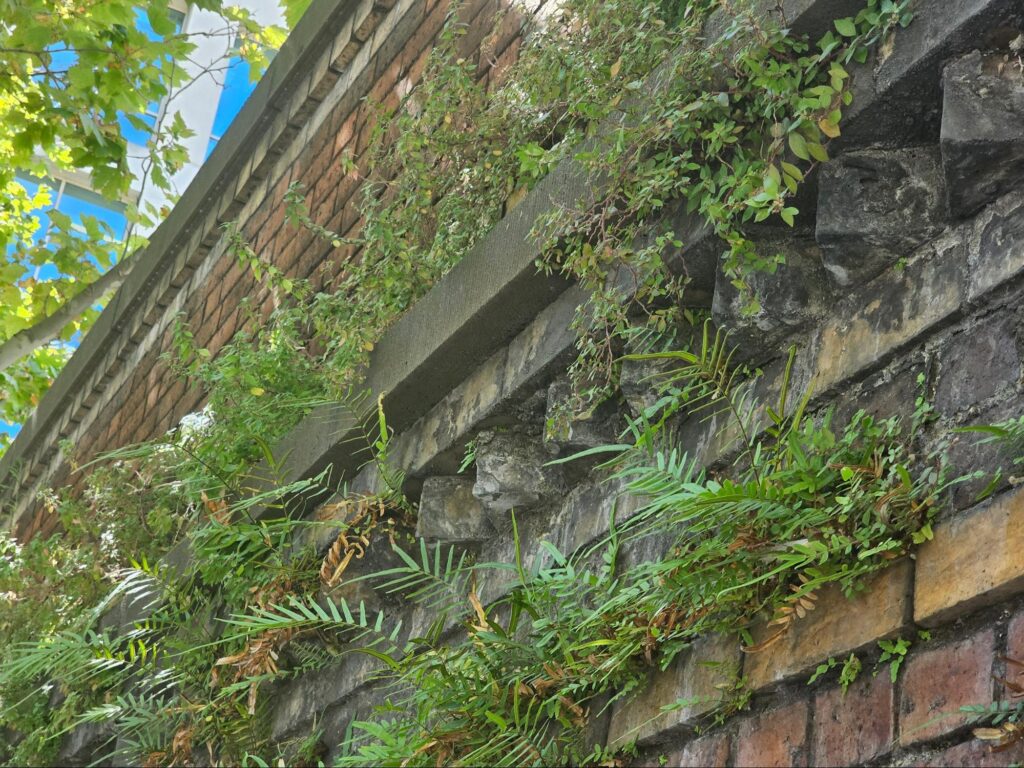
Similar to the colonization patterns observed on rocky surfaces, the establishment of these plants within mortar joints and brick masonry follows a sequential progression. Initially, small herbaceous plants, such as saxifrages, hawkweeds, and wallflowers, may take root, their shallow root systems exploiting the crevices and cracks within the mortar.
As these pioneering plants mature and decompose, they contribute organic matter and further create hospitable conditions for larger, more aggressive plant species to colonize. Woody shrubs, such as ivy or Virginia creeper, may then establish themselves, their more extensive root systems capable of penetrating deeper into the mortar joints and exploiting any structural weaknesses.
Eventually, if left unchecked, even larger woody plants or trees may take root, their robust root systems exerting immense mechanical forces as they expand within the confined spaces of the mortar joints and masonry cavities. These forces can cause the mortar to crack, crumble, and dislodge, compromising the structural integrity of the masonry wall.
As the plant growth progresses, the roots can create a network of channels within the mortar, facilitating water infiltration and further accelerating the deterioration process. The absorption of water by the roots and their subsequent expansion during freeze-thaw cycles can also contribute to the dislodgement of bricks or stones, potentially leading to the eventual collapse of the masonry structure.
Bio-colonization is not merely an aesthetic issue; it is a dynamic process that, if left unchecked, can have severe consequences for the longevity and structural stability of historic brick masonry. Regular maintenance, including the removal of unwanted vegetation, the application of biocides or coatings, and the repair or replacement of damaged mortar and bricks, is essential to mitigate the impact of bio-colonization and preserve these valuable architectural assets for future generations.
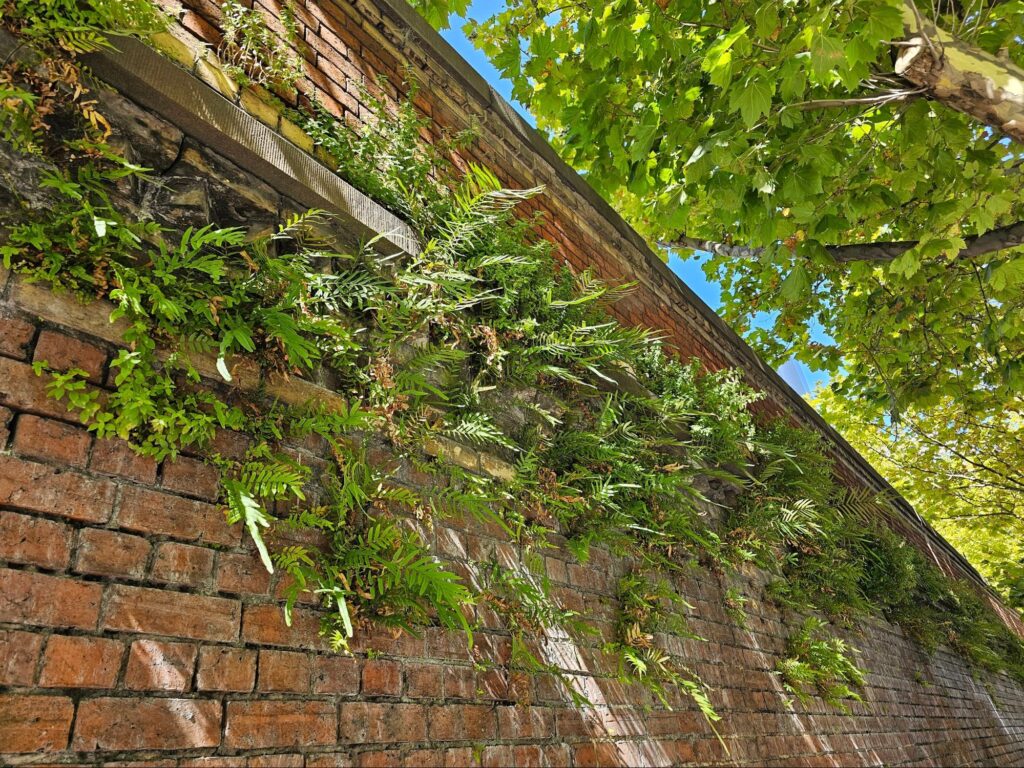
At Dupont Tuckpointing and Masonry, we take pride in our work and strive to ensure that every project is executed with the utmost care and attention to detail. We are committed to preserving the rich heritage of Washington D.C.’s built environment for generations to come.
If you have any questions or needs regarding masonry restoration, historic brick repointing, or tuckpointing services, please do not hesitate to reach out to us. We would be delighted to assist you and provide you with the expertise and quality workmanship that your historic property deserves.
You can reach us by telephone at (202) 796-7644 and you can reach us by email from the contact form on our website at https://duponttuckpointingmasonrydc.com/contact-us/.




